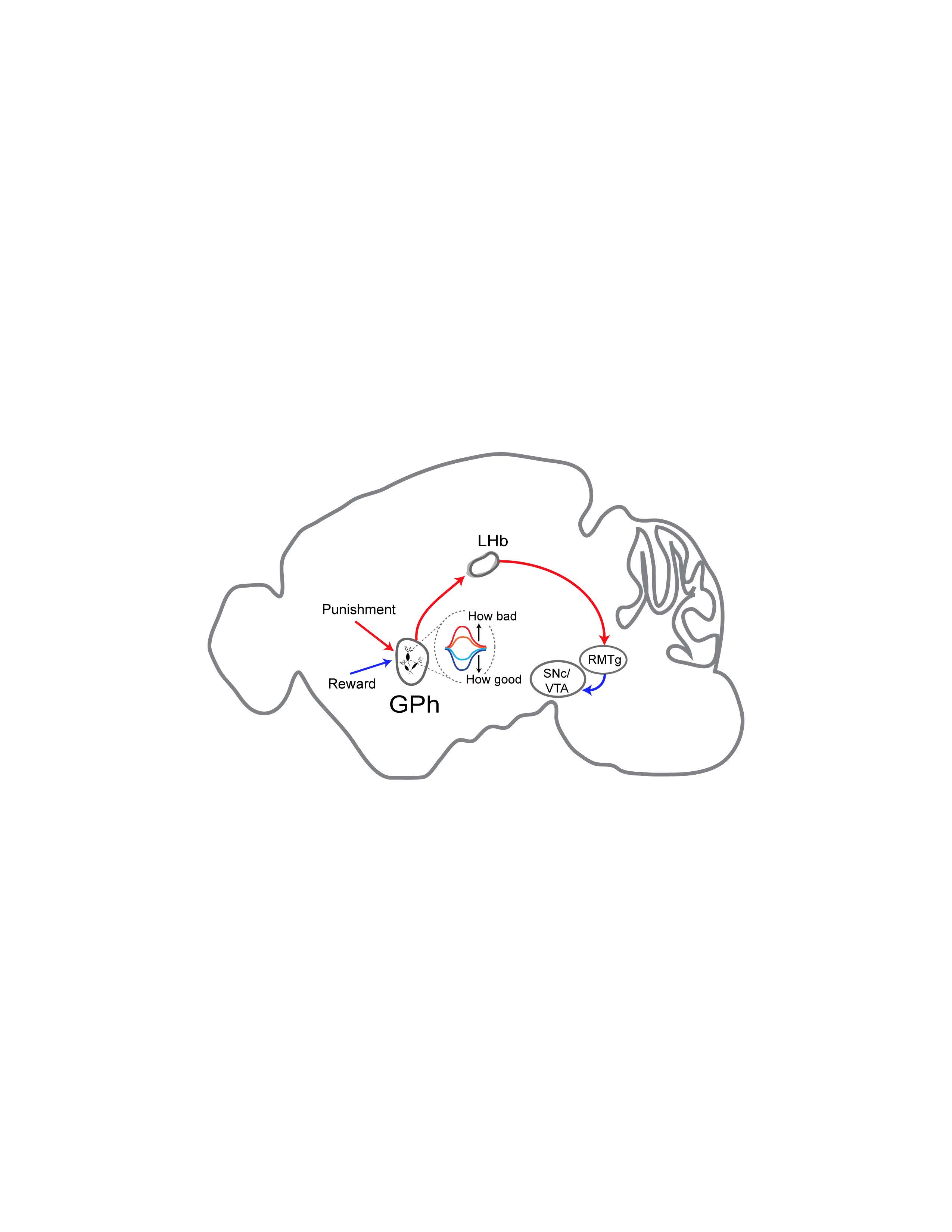
NLM Lecture: Dissecting the role of the habenula-projecting globus pallidus in behavioral reinforcement
Description
The habenula-projecting globus pallidus (GPh), a phylogenetically conserved non-motor output of the basal ganglia, has recently emerged as a key controller of the brain’s reward system. It excites the lateral habenula (LHb) that, in turn, drives inhibition onto dopamine neurons when an outcome is worse than expected, and is thus thought to provide the “prediction error” signal essential for learning to avoid unrewarding actions. However, whether the GPh contributes to such a learning process has never been examined, and consequently how it influences behaviour remains unclear. Here we show that the GPh plays a more fundamental behavioural role than currently believed, as it is critical for reinforcing behaviours that lead to reward as well as discouraging those that do not. We found in a classical conditioning task that individual mouse GPh neurons were inhibited or excited, respectively, when an outcome was better or worse than expected. Mimicking these prediction error signals with optogenetic inhibition or excitation was sufficient to drive positive reinforcement or punishment in a probabilistic switching task. Moreover, cell-type-specific synaptic manipulations revealed that the inhibitory and excitatory inputs to the GPh are necessary for mice to appropriately respond to positive and negative feedback, respectively. Our results provide the first direct evidence that the GPh conveys both positive and negative evaluation signals to update the expected value of actions during reinforcement learning.
Speaker Bio
Bo Li is an Associate Professor at Cold Spring Harbor Laboratory
Ph.D., The University of British Columbia, 2003
I have the training, expertise, leadership, and motivation necessary to successfully carry out the proposed research project. I have a broad background in neuroscience, with specific training and expertise in synaptic physiology, as well as molecular, cellular, and behavioral neuroscience. The focus of research in my laboratory has been to understand the link between neural circuits and behavior. We are particularly interested in studying the synaptic and circuit mechanisms underlying cognitive functions such as attention, and learning and memory; as well as synaptic and circuit dysfunction that may underlie the pathophysiology of mental disorders, including autism, schizophrenia, depression, and anxiety disorders. We integrate in vitro and in vivo electrophysiology, imaging, molecular, genetic, optogenetic, and chemogenetic methodologies to probe and manipulate the function of specific neural circuits in rodent brain, and to determine their role in adaptive or maladaptive behavioral responses in various paradigms. We are currently undertaking three major lines of research to investigate: 1) the role of the thalamic reticular nucleus circuitry in sensory processing, attention, and cognitive deficits related to schizophrenia; 2) the role of the lateral habenula circuitry in reward processing and behaviors related to depression; and 3) the role of the amygdala circuitry in fear regulation and anxiety. In particular, our recent studies demonstrate robust fear conditioning-induced synaptic plasticity in the central amygdala inhibitory circuits that may store fear memory and control fear expression.

